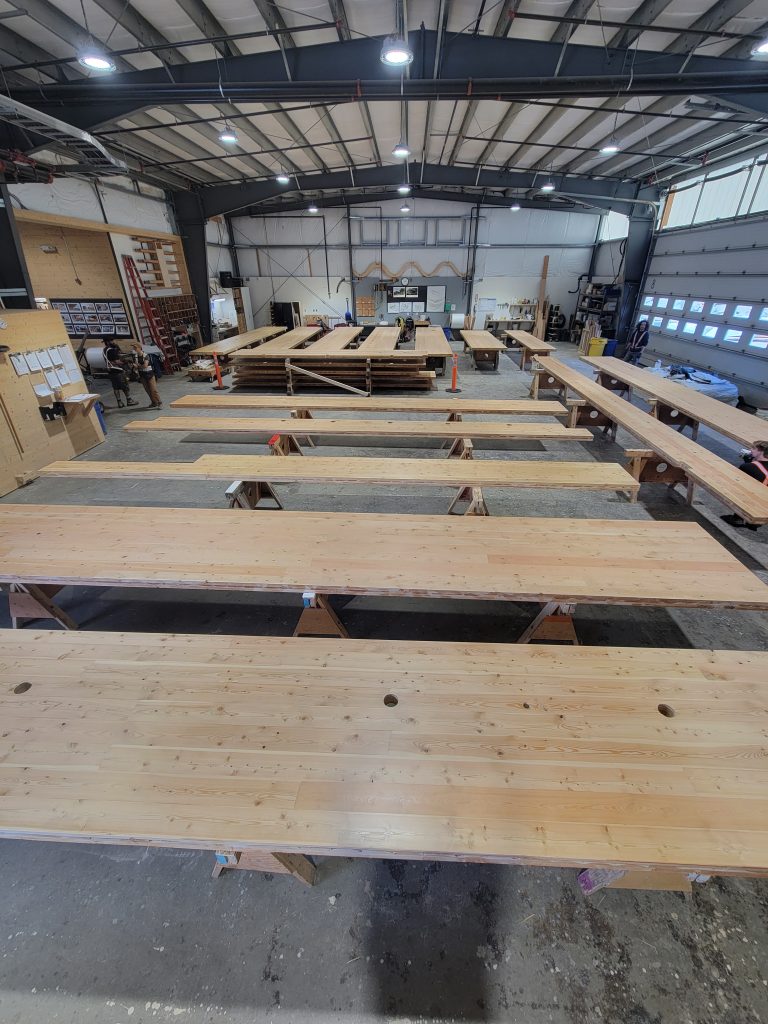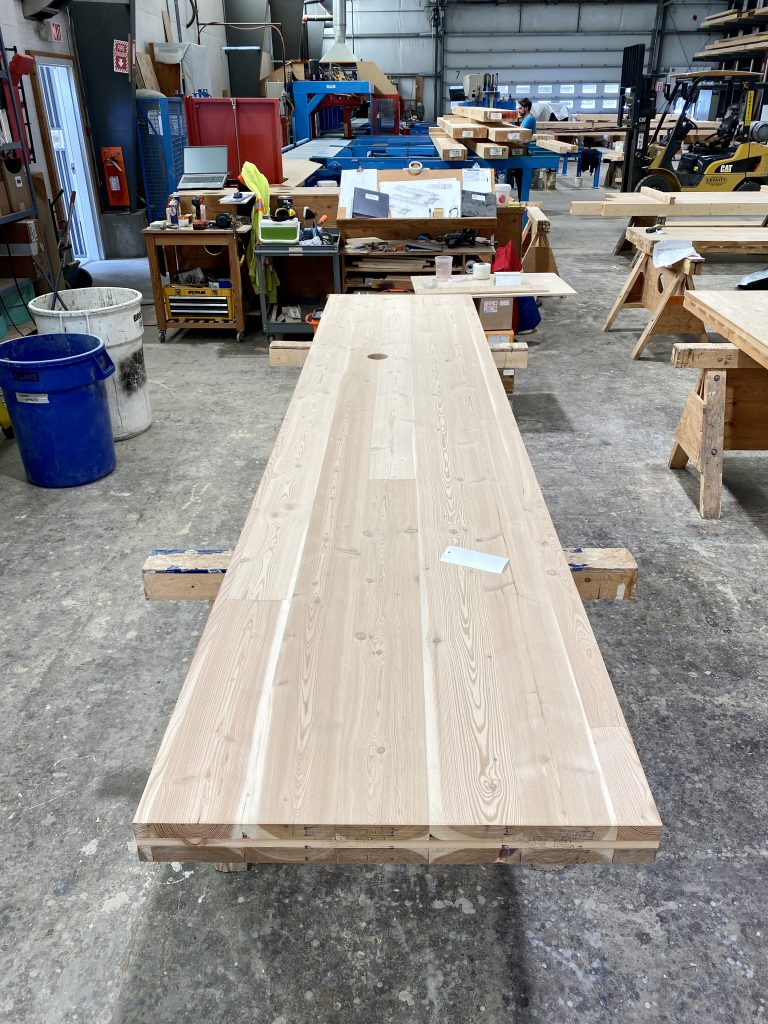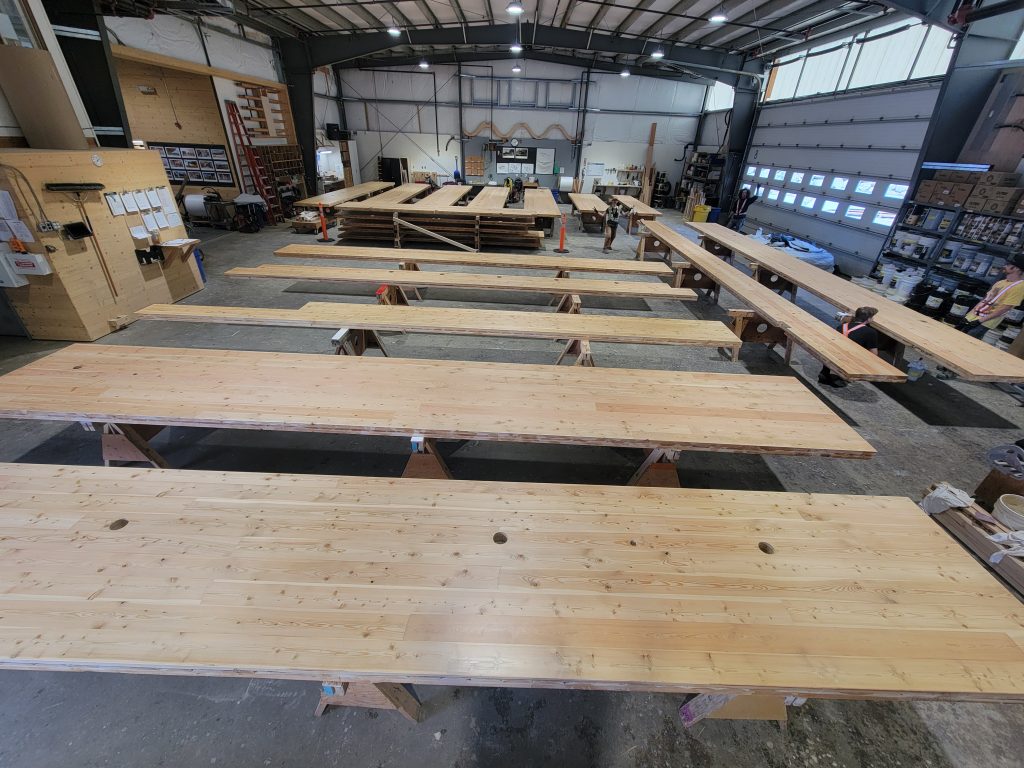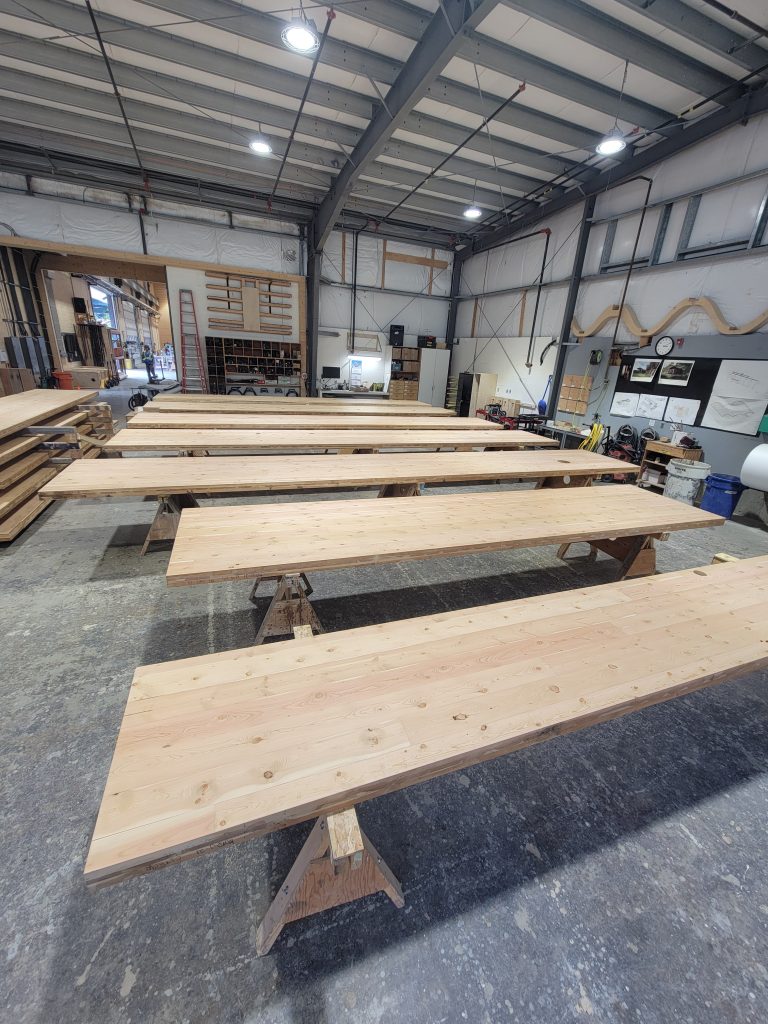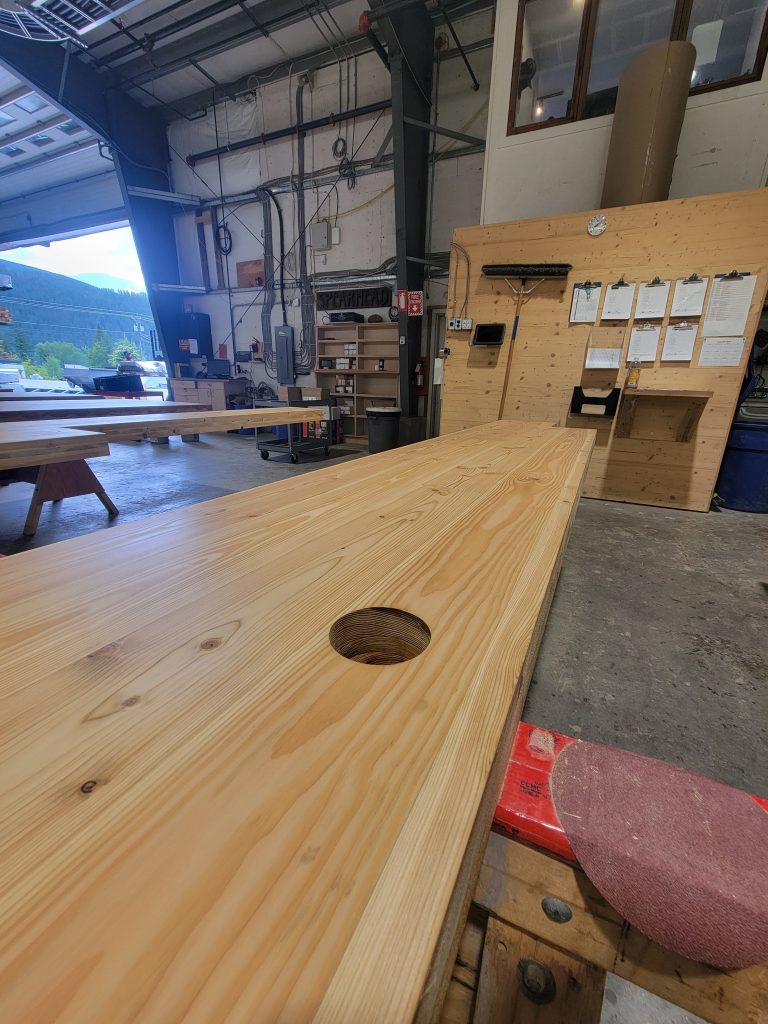Bridging Maui’s housing gap: Mass timber is fast, durable and fire-resistant option

A pre-fabricated, fire-resistant building material known as mass timber can be shipped to Maui from the Pacific Northwest and reduce on-site construction by at least half, compared with traditional stick-built homes, according to Haʻikū architect David Sellers.
That’s a significant savings of time, especially when rebuilt homes are in high demand from wildfire survivors, many of whom are running out of insurance or have been paying rent while waiting for the opportunity to return to their own homes, Sellers said.
And, it’s a potential bonanza of new jobs for skilled Maui construction workers needed to put together thick panels of wood, engineered and cut precisely to fit together at manufacturing sites on the West Coast and British Columbia, Canada.
Families impacted by the Lahaina wildfires are eligible for free or reduced-cost home design plans and rebuilding assistance in a program that’s part of a collaborative effort between the Council for Native Hawaiian Advancement and American Institute of Architects Maui chapter architectural firms, including Hawaiʻi Off Grid Architecture & Engineering. Two of the home design plans also incorporate mass timber as an option, with support from the US Department of Agriculture’s Forest Service and WoodWorks, a nonprofit that encourages the use of wood in construction. (See helpingmaui.org.)
One of the housing types is the Hale Lāʻau, a 1,134-square-foot, one-bedroom, one-bathroom accessory dwelling unit that is designed with prefabricated cross-laminated timber panels. (Minimum lot size, 40-by-80-feet.) The other is 1,326-square-foot Hale Nui Lāʻau, which features three bedrooms and two bathrooms. (Minimum lot size, 52-by-88-feet.) It’s also built with cross-laminated timber. It serves as the main dwelling for Hale Lāʻau.
For the reduced architectural fee, a property owner must be the owner on or before the Aug. 8, 2023, wildfire disaster.
Sellers is president and principal architect of Hawaiʻi Off Grid, based in Haʻikū. It is partnering with WoodWorks – Wood Products Council to build homes with mass timber, “an innovative wood solution that is sustainable, inherently fire resistant and fast to construct.”
An important piece of the initiative is to ensure that local carpenters gain the training and expertise to build mass timber homes and other structures. Training in the use of mass timber was held over two weekends earlier this month at the University of Hawaiʻi Maui College in Kahului. The workshops were sponsored by the Hawaii Carpenters Apprenticeship & Training Fund at no cost for carpenters, drywallers and millwrights employed by Hawaii Regional Council of Carpenters signatory contractors.
Funding for the project was provided by the US Department of Agriculture’s Forest Service and Softwood Lumber Board.
“WoodWorks’ role is to help developers, building designers, and contractors use wood to create quality buildings that are safe, durable, and sustainable,” said WoodWorks President and Chief Executive Officer Jennifer Cover. “We wanted to make mass timber available for the reconstruction efforts while ensuring that locals are positioned to be the ones building these structures.”
WoodWorks, which has worked with universities and training centers to establish more than 50 mass timber training programs across the country.
“Participating in this valuable effort furthers our goal of encouraging mass timber options for new construction — as a way to improve building resilience while supporting sustainable forest management for all public and private landowners,” said Brian Brashaw, assistant director, Wood Innovations, for the USDA Forest Service.
“We want to encourage the next generation to stay on the Island, and get involved in the industry,” said Matt Kopp, project manager at Hawaii Off Grid. “We anticipate a massive demand for contractors who know how to work with mass timber in the coming years.”
The new building material comes as Maui continues to grapple with an affordable housing crisis worsened by the loss of more than 3,000 homes that displaced over 6,000 households, according to the University of Hawaiʻi Economic Research Organization.
According to UHERO, the median number of days for Maui County to process a building permit for a single-family home is 206 days; for multifamily developments it’s 416 days. (See Page 24 of UHERO’s Hawaii Housing Factbook.) Over five years, the county has processed 1,976 building permits for single-family homes — an average of 395 per year. The net number of homes added to Maui’s housing supply over five years has been negative 292, according to UHERO.
Even before the August 2023 wildfires, Maui had a housing deficit of about 10,000 homes, said Sellers, who’s also the American Institute of Architects Maui president.
While the cost of prefabricated cross-laminated (mass) timber panels is higher than typical wood-framed construction, overall project savings comes with the greater speed and ease of assembling the structure. It remains to be seen whether the time savings offsets the cost of materials, but Sellers said he thinks the cost of two identically designed homes — one with mass timber and the other with conventional wood — would be “very, very comparable.”
Mass timber is a category of framing styles characterized by the use of large, engineered wood panels, often paired with engineered wood columns and beams. Its value as a building material in Hawaiʻi includes reduced carbon impact, as well as its natural ability to char in a fire while retaining its structural strength.
With “charring,” the outside of the thickly compressed wood panels burns when it comes into contact with flames, but its combustion is slower and eventually burns itself out, according to Sellers.
For detailed information about mass timber’s fire resistance, click here.
Char calculations are well established based on the size of mass timber elements, allowing designers of these projects to meet building code requirements for safety and performance.
“The fire rating [for mass timber] is very good because wood at this size will char in a fire,” Kopp said. “The charring on the wood protects the structure, giving occupants time to exit the building.”
“Mass timber allows us to sequester more carbon than we emit during construction, manage our forests responsibly, and help communities become more resilient to wildfires,” Sellers said.
Hawaii Off Grid is working on the design and construction process for Hawaiʻi’s first mass timber home on Kauaʻi and several ongoing mass timber builds for future Lahaina homes.
Sellers said mass timber is allowed in the 2021 International Building Code, which has not yet been adopted by Maui County. However, the county can allow the use of newer materials, such as mass timber, if it’s part of a newer, but not yet adopted building code, he said.
“Mass timber is a newer kind of construction typology, and relatively new to Hawaiʻi,” Kopp said. People (in Lahaina) who lost their homes can rebuild them in a way that we think is very sustainable. Everything comes pre-cut, ready for connecting; the idea is that it can be erected on site, affordably and very quickly.”






